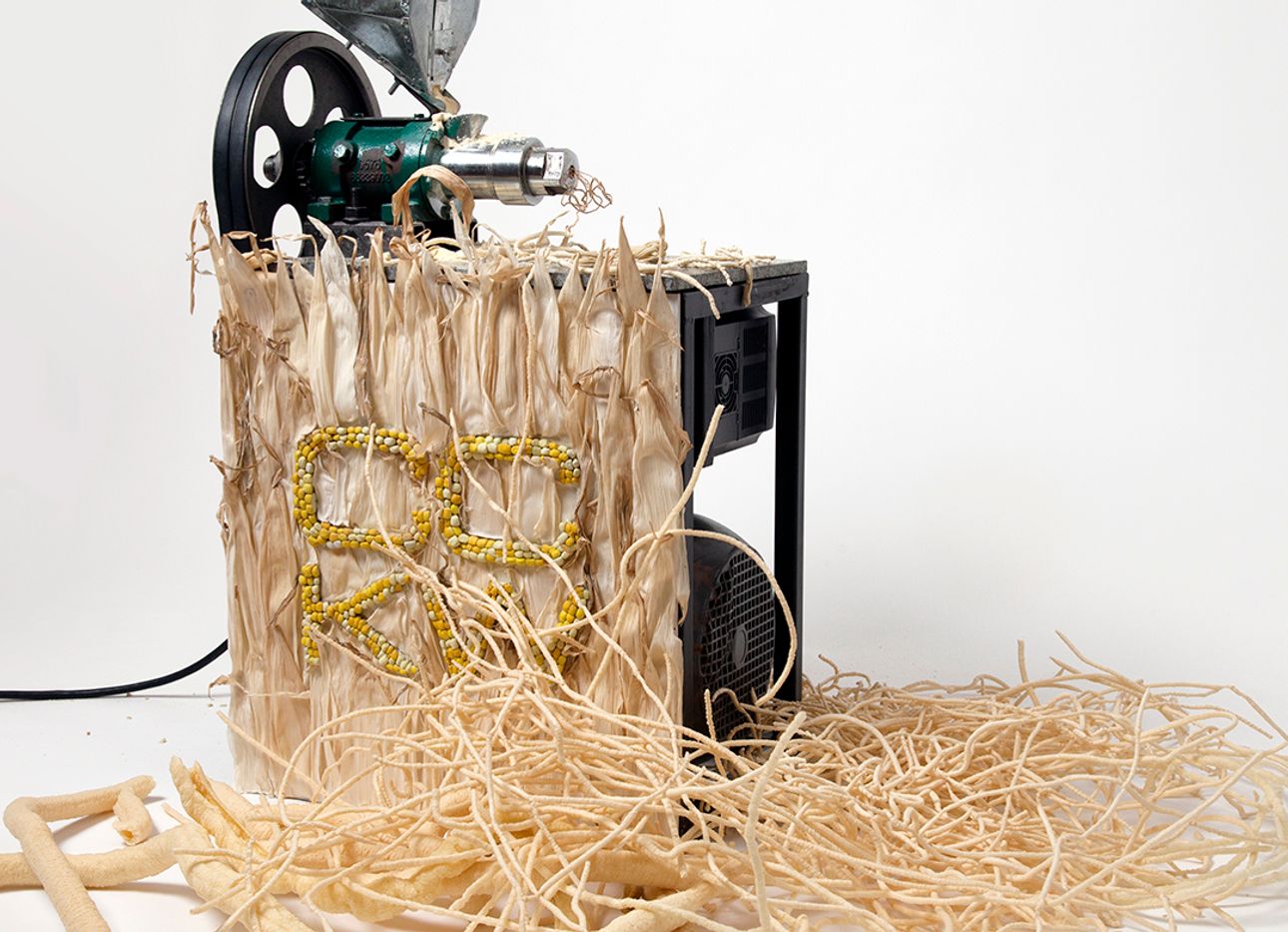
Chen Chen and Kai Williams on Playing With Food
Process, materiality, and a sense of playfulness often figure into the work of designers Chen Chen and Kai Williams. As does a love of food: When not making furniture or products, the Brooklyn-based duo are known to stage intricate food installations involving custom machinery, from an industrial Cheeto machine to a dry-ice cocktail fountain, and even a “satanic hot dog spit.” Here, they tell us how designing food and objects are more similar than we think.
When did you guys start toying with food? Does inspiration strike when you’re hungry and in the studio?
Chen: With most of our practice, we try to incorporate a sort of nonserious vibe to things. Even then, there are constraints of making stuff for the luxury design market—there’s a level of seriousness that has to be incorporated into it. Making food is definitely not our core business, and part of the fun and appeal of it is that it’s so impermanent.
Williams: It’s a wonderful challenge to see what you can make out of what you have. We’re always trying to experiment with materials, and what’s wonderful about these food projects is the immediacy. It makes everything more approachable, and I think it really frees people to look at it in a different way. A couple of years ago, we also used to produce these planters that were cast-cement in the shape of fruits. And the process for that is very much like making food: you’re mixing a dry mix, trying to achieve a specific consistency.
What’s interesting is that you’re using industrial design tools to sort of poke fun at the industrial food complex—but in this performative and ad hoc way, tinkering with machines.
Chen: Yeah. There’s also this interplay between industrial design and food—like, for example, I think band saws, which are a ubiquitous woodworking tool, were originally invented for slaughterhouses. So, for us, the approach is still very process-based for the food projects. Our Cheeto machine works in the same way as an injection molder: you’re essentially putting pellets (in this case, cornmeal) into a hopper. It gets compressed and heated up, and then comes out of an extruder. A lot of these things really come from an interest in how that product is made. There are always these parallels between the production of hard goods, and these food-production methods. It’s also just fun to hack to equipment.
Williams: A cool thing that we learned in school was that the earliest industrial designers that were thought of as such worked in the food industry because they were designing equipment that made it safer and just better to produce.
Chen: That’s basically what [our Cold Cuts coasters] were inspired by—we were at the deli counter, like, watching them slice things. And originally our concept for that design was that we’d have these logs of material and then, at the point of purchase, we could slice them for people. Although, ultimately, that part didn’t pan out, because it was so messy. [Laughs]
There’s also a performative aspect to your work. I recall seeing a video of you both making one very, very long Cheeto that was the length of an entire loft.
Chen: I once saw somebody doing this in China, just on the side of the road. These guys had a machine, and were making Cheetos and selling bags of them to people on the street. It was something that inspired so much joy—but it’s also just how Cheetos are made. A super-long Cheeto is just what it is, if you don’t cut it up. For a lot of the things we do, we’re just taking very commonplace things and showing [them] to people in a way that allows them to see it for what it is, and the real miracle that these things are.
Williams: What we actually wanted to do with the long Cheeto was have it go out the window, down to street level, and into someone’s mouth. [Laughs] But it was raining that day, so it got a little soggy.